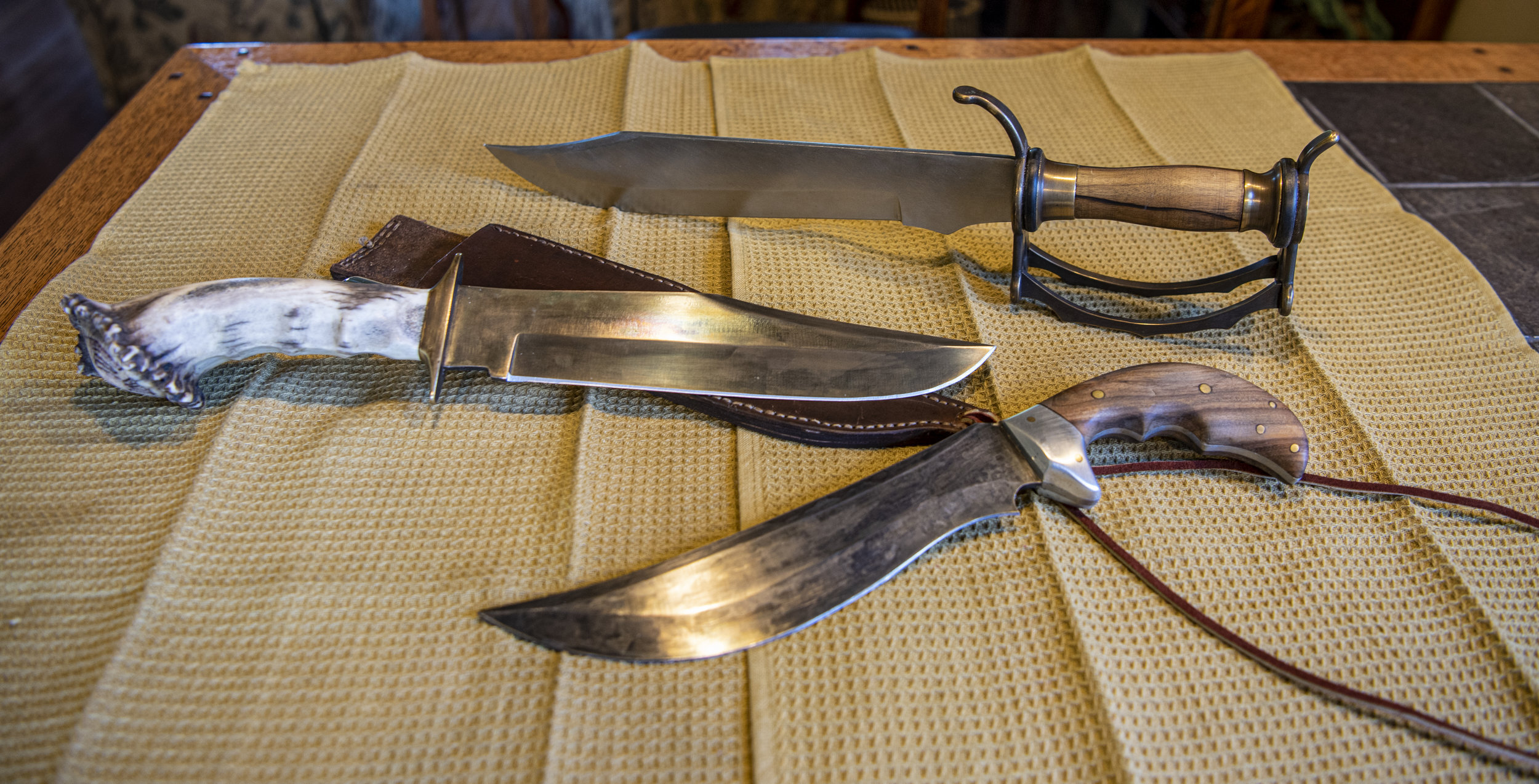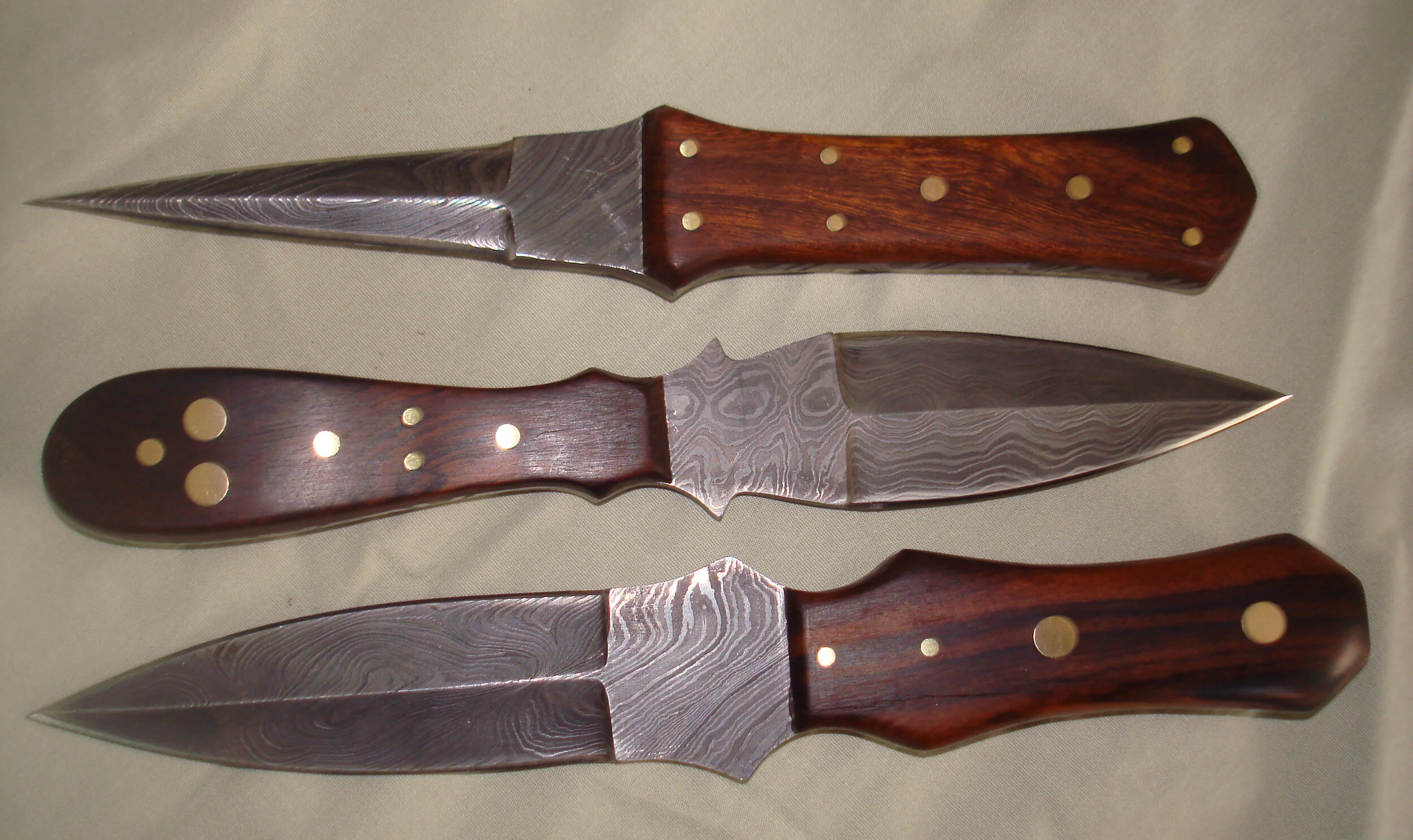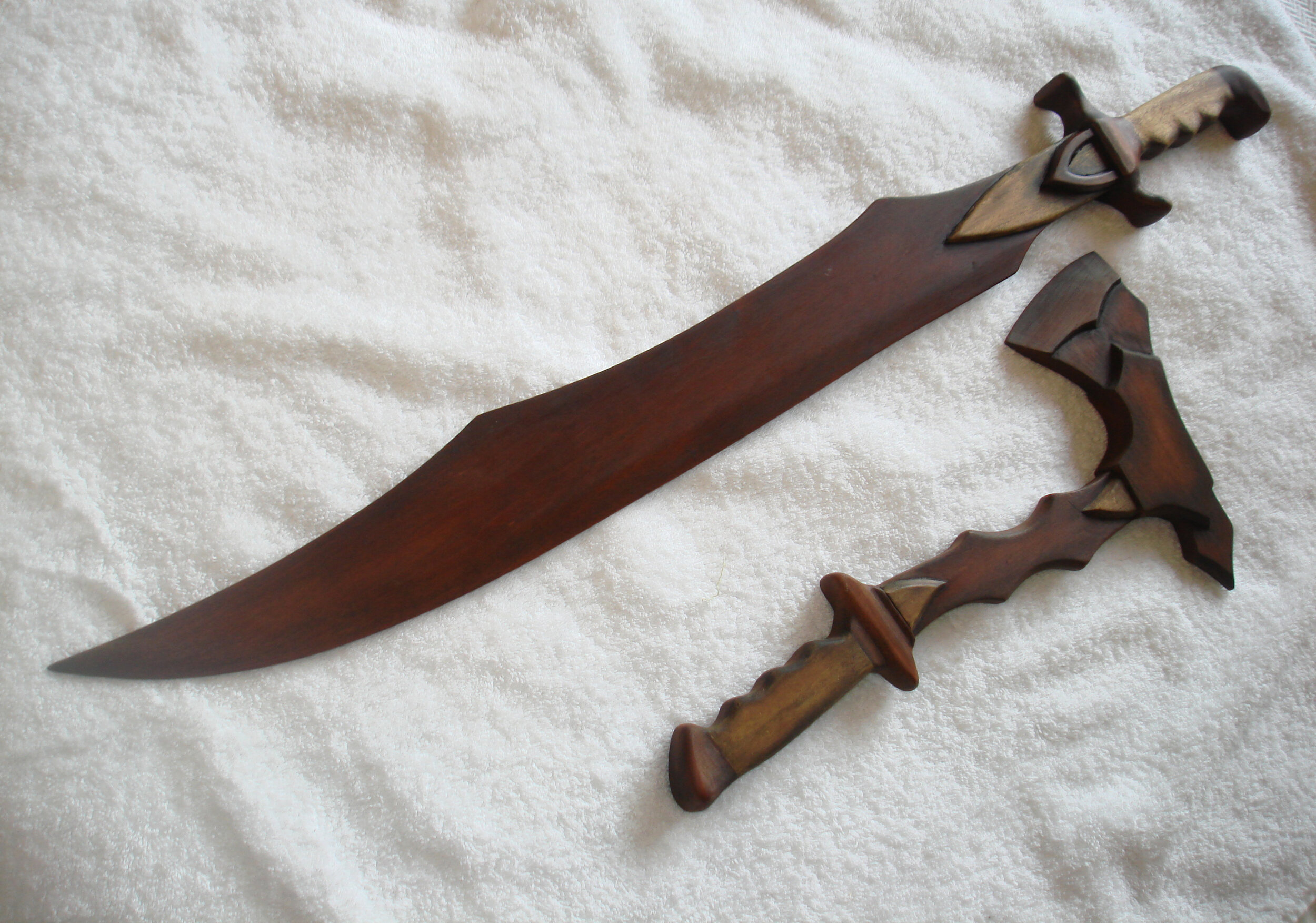
THOMPSON SUB-MACHINE GUN
The Thompson is an all wood, full-scale reproduction of a 1928 release Thompson sub-machine gun. This gun was first released to the public in 1921 for $200. It was later deemed illegal for private ownership. The next release was in 1928 for law enforcement and a small amount for the military. It was expensive to make and to better support the military, went through a cost cutting re-design. The third release was in 1941, at the beginning of WWII. This reproduction has the stocks and pistol grip made of walnut and the painted parts made from maple. It was hard to get all the dimensions, but if you go on the internet, you can eventually find anything.

ALL WOOD PISTOL REPRODUCTIONS
The top right gun is a reproduction of an 1873 Colt .45 revolver made of rosewood. The Center left model is a WWII 1911 .45 ACP with the original WWII features made of walnut. The bottom right small gun is a 4-barrel Sharps pepperbox (.22 long rifle) boot pistol.

ALL WOOD 1911
This is a walnut mock-up of a 1911 .45 ACP pistol along side the real thing; however the model was modified to WWII specs., Note the trigger and hammer, the front and rear sights and the grip back strap.

ALL WOOD 1911 PISTOL, LEFT SIDE

ALL WOOD COLT .45 REVOLVER
1873 Colt revolver mock-up made of rosewood. The gun that won the West.

ALL WOOD COLT .45 REVOLVER
This is a comparison of the mock-up to the real thing.

GUN STOCK CARVING
This photo is of a 12 gauge 1878 double barrel coach shotgun and a Ruger 10-22. Most people think the cowboys all carried a 6-gun, but a Colt .45 ran about $16, which was two months pay for a cowboy. A large percentage of them carried a 12 gauge coach shotgun that they could buy mail-order from Sears Roebuck for about $5 or $6. I still see Walter Brennan sitting on a stagecoach seat with a Coach gun across his lap every time I pick this gun up. This was my first attempt at gunstock carving. You can see several views of the carving in the next photos . It also has a lace on buffalo hide shoulder pad. The Ruger 10-22 has had the glossy finish removed on the stock and was lightly stained. The carving is very “cowboy” with barbed wire, a Texas star, a cow skull and a horseshoe.

STOCK CARVING DETAIL

STOCK CARVING DETAIL

STOCK CARVING DETAIL

STOCK CARVING DETAIL

STOCK CARVING DETAIL

STOCK CARVING DETAIL

ST. LOUIS HAWKENS RIFLE
The Hawken .50 caliber rifle is made from a kit. It is a percussion muzzle loading rifle with a heavy octagon barrel. I did quite a bit of carving on the stock to give it a custom look.

HAWKEN CARVING DETAIL

HAWKEN CARVING DETAIL

HAWKEN CARVING DETAIL

HAWKEN CARVING DETAIL

PLAINS PISTOL
This Plains pistol was made from a kit. The metal and wood parts have been modified to get the look I was going for. The gun stock has a lot of deep relief carving on it and some of the brass parts have been modified. It is a .50 caliber, muzzle-loading percussion cap pistol that was used before and into the Civil War. The box was designed to house all the gear it took to fire, clean, and maintain the gun.


KEEP YOUR POWDER DRY
This is an assortment of powder horns, flasks, and primer powder flasks. These are mostly made from gourds and carved on the outside. The one at the bottom is a flask made from brass with wooden ends and a measuring spout. I copied this as close to the original as I could. It is inscribed “James P. Bailey, 6th Regiment, Indiana Legion, Battle of Corydon, July 9, 1861” in honor of one of my wife’s ancestors. It is similar to an inscription I saw on one on the internet.

KNIFE COLLECTION

KNIFE COLLECTION
A part of my collection of hand made knives on a wall-mounted rack.

COWBOY/TRAPPER KNIVES
I started making my own scabbards. This one holds a big knife and a smaller knife. The smaller one was likely used as a replacement for eating utensils (knife, fork and spoon). The big knife was a general-purpose knife. Both knives have ebony grips with brass pins.

ASSORTED KNIVES
More scabbards. Some of the knives are made from files. The center one in back is made from a blacksmith file used to file horses hooves while re-shoeing. It has a cord grip.

MORE KNIVES
The knife on the bottom right, with the silver grip, was made from an old kitchen knife. They actually made knives like this that were more than likely carried by “ladies of the evening”.

BIG KNIVES
The top knife is a Confederate “D” grip side knife. It has an overall length of 17” with a 12” blade. This knife is unusual because it had a double “D” guard that were brass knuckles. The center knife is also 17” long with a 12” blade. This knife has an antler grip. Big knives like this were not often used as weapons; but were more likely used to cut brush or chop campfire wood. The antler knife was often used by cowboys or trappers. I don’t know quite what you would call the lower knife. I think it has kind of an East Indian look to it. I just liked the way it looked.

WWII SOUVENIR KNIVES
This box contains copies of some of the most sought after souvenirs of the GI’s in Europe in WWII. I think the PO8 Luger was number one but these knives came in right behind it. The top knife is a Luftwaffe dress uniform dagger. The center knife is a Hitler youth knife. The small folding knife was a Luftwaffe pilots survival knife and the bottom knife is a SS officer’s dress uniform knife. I had the 200-layer Damascus blades made by a master knife maker in India. I made all the blade guards in brass and the handles are wood. The Hitler youth handles were originally made of nickel but as the war went on, the material became harder to get so they used lesser materials . The hardest thing to find in making these knives was the insignias. Some of them I had to make by hand.



